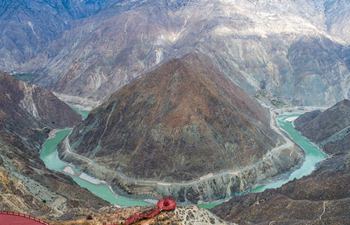RAISE QUESTIONS
How did our primitive aquatic ancestors invade land? The change of body plan from breathing and navigating in water to moving on land is one of the most profound evolutionary changes. It's more than just turning fins into limbs; it's a comprehensive transformation of all body structures, including the respiratory system.
In 1980, Chang visited the Swedish Museum of Natural History in Stockholm and met with Erik Jarvik, famous for his study on rhipidistians, a type of lobe-finned fish. He believed that porolepiforms, a group of rhipidistians, had three pairs of nostrils: two external like modern fish, and one pair internal for breathing on land.
Three pairs of nostrils in the same fish made it impossible for another promising projection that the internal nostrils actually evolved from a pair of external ones.
Chang overturned Jarvik's conclusion using the serial-section technique that she learnt from him.
She studied Youngolepis, a fossil fish found in Qujing City, southwest China's Yunnan Province. She first ground off a very thin section from the 2.8-centimeter cranium, drew a picture of the section with the aid of a microscope and repeated the process through the whole fossil. In total, she drew over 540 pictures, from which she made thin wax plates. These sticky wax plates were assembled to form a three-dimensional scaled-up model, with clear internal structures.
Jarvik took 25 years to restore a fossil by this method, but Chang took only two years.
Her hard work was soon repaid. She discovered there were no internal nostrils in Youngolepis, which was thought to be very close to porolepiforms. This led her to recheck porolepiforms, which were then proved to have no internal nostrils either.
The discovery made her peers reconsider the innovation of internal nostrils. Her student, Zhu Min, later found evidence from a small lobe-finned fish called Kenichthys that a pair of external nostrils was moving into the mouth.
"She raised a crucial question, so we could advance the building of the evolutionary tree of early vertebrates," says Zhu, the former director of IVPP.
NEW DIRECTION
In the 1990s, she handed over the fruitful study of fish fossils in the Devonian Period to Zhu Min and others and turned her focus to cyprinid fish fossils in the Cenozoic age.
Cyprinid fish fossils are widespread and common, and it's hard to publish high-quality research papers about them. "I did struggle. But how can we make really big discoveries without lonely and dreary basic work?" she says.
In recent years, her team has found well-preserved fossils in the Qinghai-Tibet Plateau. Some had extremely fattened bones, a possible result of increasing calcium salt in water.
"If we want to tell a story about the regional aridity trend, what else could be more vivid than these fossils?" she says.
The fish fossils carry the code of climatic and water changes in ancient times, and will help rewrite the history of the Earth, she says.

















